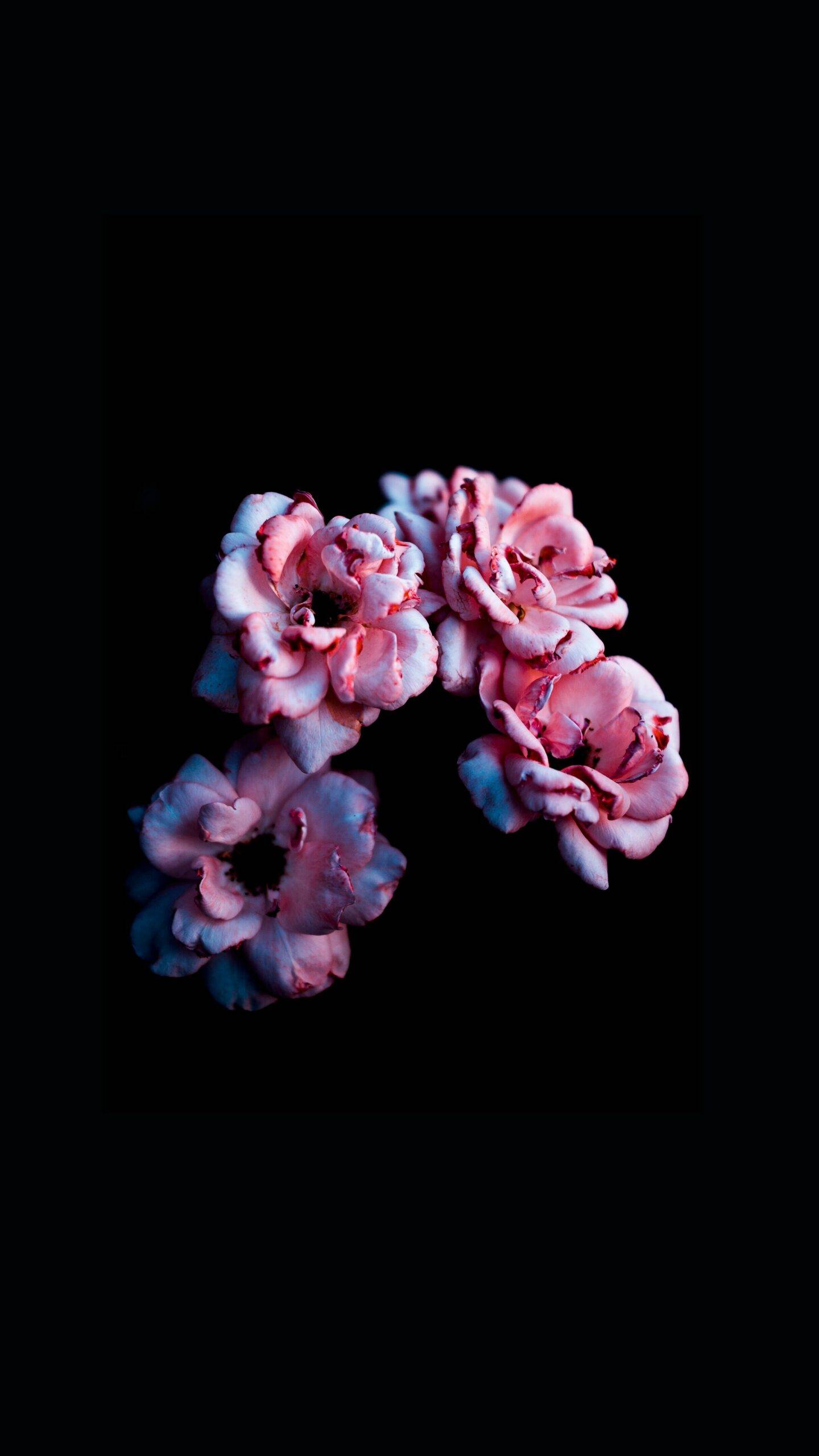The Art of Dried Flowers
Incorporating dried edible flowers into your cakes and baked goods not only adds a touch of elegance but also a unique flavor profile that can transform your culinary creations. With a few key considerations, you can ensure that your use of these delightful blooms is both safe and effective.
Choosing Safe, Pesticide-Free Varieties
When selecting dried edible flowers, it’s crucial to choose varieties that are safe for consumption. Opt for blooms that have been grown without the use of pesticides, as these chemicals can be harmful if ingested. Start by looking for organic certifications or sourcing your flowers from reputable suppliers who specialize in edible dried flowers.
| Flower Type | Safe for Consumption | Organic Available |
|---|---|---|
| Lavender | Yes | Yes |
| Rose Petals | Yes | Yes |
| Pansies | Yes | Often |
| Chamomile | Yes | Yes |
It’s equally important to ensure that the flowers you select are indeed edible, as not all flowers are safe to eat. Varieties such as lavender, rose petals, pansies, and chamomile are popular choices due to their delightful taste and aroma (Dr. Axe).
Harvesting and Preparing for Drying
Once you have chosen your pesticide-free, edible flowers, the next step is to harvest and prepare them for drying. This process involves picking the flowers at their peak freshness and ensuring they are clean and free from blemishes. After carefully washing the flowers, pat them dry with a clean towel to remove any excess moisture, which can lead to mold during the drying process.
Follow these simple steps for preparing your flowers:
- Choose flowers that are free from dew and rainwater.
- Gently wash the petals to remove any dirt or small insects.
- Pat the flowers dry with a soft cloth or paper towel.
- Prepare the flowers for drying by laying them out or hanging them up, depending on the drying technique you plan to use.
By properly harvesting and preparing your edible flowers, you can preserve their natural beauty and flavor, making them a perfect addition to a pressed flower cake or as edible pressed flowers for cakes. Careful preparation is the foundation for ensuring that your dried blooms are both visually stunning and deliciously safe to enjoy.
Preserving Your Blooms
Preserving the beauty and flavor of your garden’s flowers is a delightful way to enhance your culinary creations. With the right drying and storing techniques, you can enjoy the essence of summer even during the colder months. Let’s explore how you can extend the shelf life and intensity of flavor of your favorite edible blossoms.
Effective Techniques for Drying
Drying your edible flowers is a simple process, but it requires patience and care. Here are some effective methods for drying your blooms:
- Air drying: Hang bunches of flowers upside down in a warm, dry, and well-ventilated space out of direct sunlight. This can take a few days to a couple of weeks, depending on the humidity levels in your environment.
- Oven drying: Place flowers on a baking sheet lined with parchment paper and dry them in an oven set to the lowest temperature. Keep the door slightly ajar to allow moisture to escape. This method can take a few hours.
- Microwave drying: Sandwich flowers between two paper towels and microwave them in short bursts, checking frequently to avoid overheating. The process usually takes only a few minutes.
- Silica gel drying: For flowers that you want to maintain a more lifelike appearance, consider using silica gel crystals. Bury the flowers in the silica gel and wait for a few days until they’re completely dry.
Each of these techniques can help preserve the color, flavor, and aroma of your flowers. Remember, the key to effective drying is low heat and good air circulation.
For more detailed instructions on air-drying and other methods, check out our article on edible pressed flowers.
Storing for Longevity
Once your flowers are dried, proper storage is essential to maintain their quality. Here’s how you can store your dried edible flowers for several months:
- Airtight containers: Use glass jars or airtight plastic containers to protect your blooms from moisture and pests.
- Cool, dark place: Store the containers in a pantry or cupboard away from direct sunlight, which can fade the colors and diminish flavors.
- Labeling: Be sure to label each container with the type of flower and the date of drying to keep track of freshness.
By following these storage guidelines, you can ensure that your dried edible flowers retain their beauty and taste for your pressed flower cake and other festive treats.
| Drying Method | Duration | Notes |
|---|---|---|
| Air Drying | A few days to weeks | Best for low humidity areas |
| Oven Drying | A few hours | Keep temperature low |
| Microwave Drying | A few minutes | Monitor closely to avoid overheating |
| Silica Gel Drying | A few days | Preserves lifelike appearance |
Whether you’re planning to add a floral touch to a pressed flowers for cakes or want to infuse a delicate flavor into your homemade teas, these preservation methods will ensure that you have high-quality dried edible flowers at your fingertips. Remember, sourcing your flowers from reliable, organic suppliers is crucial to ensure they are free from pesticides and safe for consumption. For more information on where to find such quality blooms, take a look at our guide on edible dried flowers for cakes.
Culinary Uses of Dried Blooms
Dried edible flowers offer an array of possibilities for enhancing both the flavor and appearance of your culinary creations. Whether you’re preparing a meal for a special occasion or simply looking to add a touch of elegance to your everyday dishes, incorporating dried blooms can elevate your food to new heights.
Flavor Infusions and Teas
Dried edible flowers can transform the ordinary into the extraordinary by infusing flavors into a variety of liquids. Imagine adding a delicate floral note to your oils, vinegars, and even spirits. This subtle enhancement can take your cooking to a new level of sophistication.
| Flower Type | Infusion Ideas |
|---|---|
| Lavender | Syrups, Sugars |
| Chamomile | Teas, Desserts |
| Rose Petals | Oils, Spirits |
For those who enjoy a warm cup of tea, edible dried flowers like chamomile or lavender can be steeped to create a relaxing and aromatic brew. You can experiment by mixing different flowers to create your own signature tea blends. The possibilities are as limitless as your imagination.
Baking and Dessert Garnishes
Dried blooms are not just for teas and infusions; they also make stunning additions to baked goods. Whether you’re decorating a pressed flower cake or sprinkling petals over a batch of cookies, these floral elements add a pop of color and an element of surprise to your desserts.
For inspiration, consider the following uses of dried edible flowers in your baking:
- Cakes: Adorn your edible pressed flower cake with a variety of colorful petals for a natural and rustic look.
- Cookies: Use edible pressed flowers for cakes to create a beautiful pattern on top of your sugar cookies.
- Cupcakes: Sprinkle smaller blooms or petal fragments atop frosted cupcakes for a whimsical touch.
With dried edible flowers, your desserts will not only taste delightful but will also look like a masterpiece. Plus, they have the added benefit of a longer shelf life compared to fresh flowers, giving you the flexibility to use them whenever inspiration strikes.
Remember, when selecting dried blooms for culinary use, always ensure they are free from pesticides and are intended for consumption. Explore our selection of edible dried flowers for cakes to find the perfect match for your next baking project. Whether steeping a pot of tea or garnishing a dessert, dried edible flowers are a simple yet impactful way to add a floral touch to your dishes.
Popular Varieties for Your Creations
Adding dried edible flowers to your culinary creations can transform simple cakes and desserts into works of art. Whether you’re making a treat for a birthday or a festive occasion, these blooms not only bring beauty but also offer unique flavors and aromas. Let’s dive into some of the most popular varieties that you can incorporate into your baking.
Lavender and Rose Petals
Lavender is renowned for its soothing fragrance and subtle, slightly sweet flavor. Dried lavender can be sprinkled over cakes or infused into sugar for a fragrant touch. When using lavender, a little goes a long way to avoid overpowering your dish.
Rose petals, with their delicate aroma, are a classic choice for bakers. They add a romantic flair to any pressed flower cake and can be used whole or crushed into a fine powder. They pair wonderfully with flavors like chocolate, vanilla, and pistachio.
| Flower Variety | Flavor Profile | Suggested Use |
|---|---|---|
| Lavender | Floral, slightly sweet | Infused sugars, garnishes |
| Rose Petals | Delicate, aromatic | Cake toppings, infused creams |
These flowers are not only visually appealing but also contribute to the overall sensory experience of your dessert. Before using, ensure you source food-grade and pesticide-free varieties for safety. For a selection of quality dried blooms, check out edible dried flowers for cakes.
Pansies and Chamomile
Pansies come in a wide range of vibrant colors, making them an excellent choice for adding visual appeal to your cakes. They have a mild grassy flavor and can be used whole or with petals sprinkled over your creations.
Chamomile is another popular choice, often associated with its calming tea. Its flowers can be dried and used to decorate desserts or to infuse a gentle apple-like flavor into baked goods.
| Flower Variety | Flavor Profile | Suggested Use |
|---|---|---|
| Pansies | Mild, grassy | Decorative toppings |
| Chamomile | Gentle, apple-like | Flavor infusions, garnishes |
Marigold and Hibiscus
Marigold, with its bright yellow and orange hues, offers a peppery taste similar to saffron and works well in savory dishes as well as in edible pressed flower cakes.
Hibiscus, known for its deep red color and tart flavor, is often used to make tea but can also be a stunning and tangy addition to sweet confections.
| Flower Variety | Flavor Profile | Suggested Use |
|---|---|---|
| Marigold | Peppery, saffron-like | Cake decorations, savory pairings |
| Hibiscus | Tart, cranberry-like | Teas, dessert infusions |
When you’re ready to transform your cakes with these floral touches, remember to choose edible pressed flowers that are safe for consumption and organically grown. Each flower brings its own unique taste and aesthetic, so feel free to experiment with different types to find the perfect match for your culinary masterpieces.
Purchasing and Safety Considerations
When you decide to beautify your cakes with dried edible flowers, it’s crucial to buy safe and high-quality blooms. Here, we’ll guide you through finding reliable sources online and how to identify organic and food-grade options.
Finding Reliable Sources Online
Purchasing dried edible flowers online can be convenient and offers you a wide selection. Reputable online vendors such as Etsy, Amazon, and specialty food retailers offer an array of edible dried flowers suitable for culinary uses. When selecting a source, check for reviews and ratings from other buyers to ensure the quality and reliability of the vendor. These platforms often provide customer feedback that can help you make an informed decision. For a list of recommended online stores, you can refer to resources like Frolic and Fare, which highlights popular options.
In addition to customer reviews, you may want to consider the variety of flowers offered by the vendor. Some may specialize in edible pressed flowers, while others might have a broader selection, including pressed flowers for cakes. For those interested in buying in larger quantities, websites like SF Herb offer bulk dried flowers for crafts and wholesale botanicals.
Identifying Organic and Food-Grade Flowers
The safety of the dried edible flowers you use is paramount. It’s essential to ensure that the flowers are intended for culinary use and have not been treated with pesticides or other harmful chemicals. Look for labels such as “organic,” “food-grade,” or “culinary-grade” to verify their safety for consumption. These terms indicate that the flowers have been grown and processed according to standards that make them suitable for use in your pressed flower cake and other edible creations.
Additionally, check the product description and packaging for any certifications that might be listed, such as USDA Organic or similar endorsements. These certifications are a testament to the quality and safety of the product, giving you peace of mind that the flowers are free from unwanted chemicals.
When you receive your dried flowers, ensure they are stored correctly to maintain their flavor and quality. Keep them in airtight containers, in a cool, dark place, away from direct sunlight. Proper storage can help your dried blooms last for several months, allowing you to create stunning edible pressed flower cakes whenever you wish.
Remember, the goal is to find flowers that not only add beauty to your creations but also ensure the well-being of those who will enjoy your delicious and visually appealing treats. Therefore, taking the time to research and purchase from reputable sources is well worth the effort, ensuring that your edible pressed flowers for cakes are both safe and of the highest quality for your special occasion culinary masterpieces.
Nutritional and Health Benefits
Antioxidants and Vitamins
Dried edible flowers aren’t just a feast for the eyes; they are packed with nutritional benefits that can enhance your well-being. Many of these flowers are rich in antioxidants, which help combat oxidative stress and may reduce the risk of chronic diseases. For instance, roses and marigolds are known for their high antioxidant content. Additionally, edible flowers like chamomile and lavender are not only praised for their calming effects but are also a good source of vitamins.
Here is a brief table showcasing the typical antioxidant and vitamin content in some popular edible flowers:
| Flower Type | Antioxidant Properties | Vitamins |
|---|---|---|
| Rose Petals | High | Vitamin C |
| Marigold | Moderate | Vitamin A, Lutein |
| Chamomile | Moderate | |
| Lavender | Moderate | Vitamin A |
Incorporating these blooms into your diet can add a splash of color and a nutritional boost to your meals. You can learn more about the variety of edible pressed flowers that are available for culinary use.
Incorporating into a Healthy Diet
Including dried edible flowers in your diet can be both easy and delightful. These versatile ingredients can be used to infuse teas with subtle flavors or as garnishes in your favorite dishes. When using edible dried flowers for cakes, you not only enhance the visual appeal but also subtly improve the nutritional profile.
Consider sprinkling lavender or rose petals onto your next pressed flower cake for a hint of elegance and a dose of antioxidants. You can also mix dried pansies or chamomile into your salads for added vitamin content. If you’re hosting a party, why not impress your guests with a pressed flowers for cakes decoration that’s as nutritious as it is beautiful? For more ideas on how to use these colorful ingredients, check out our guide on edible pressed flower cake decorations.
By adding these dried blooms to your culinary repertoire, you’ll be embracing a new dimension of flavor and nutrition that can contribute to a balanced and healthy diet. Whether you’re a seasoned baker or a festive food maker, the use of edible pressed flowers for cakes is a delightful way to bring more joy and health benefits to your table.
Decorating with Dried Edible Flowers
Dried edible flowers offer a timeless elegance and a touch of whimsy to your culinary creations. Whether you’re a seasoned chef or a weekend baking enthusiast, incorporating these blooms into your dishes can transform the ordinary into the extraordinary.
Adding Elegance to Cakes and Cookies
Cakes and cookies are the perfect canvas for showcasing the delicate beauty of dried edible flowers. They not only add a burst of color and texture but also impart a subtle floral flavor that can elevate your dessert to a new level of sophistication.
Imagine a pressed flower cake adorned with vibrant petals that invite your guests to indulge in a visual and sensory experience. Here’s how you can achieve this:
- Choose your flowers: Select from a variety of edible pressed flowers that complement your dessert’s flavor profile and color scheme.
- Prepare your canvas: Ensure your cake or cookies have a smooth icing or fondant base to act as an adhesive for the flowers.
- Arrange with care: Gently press the dried flowers onto the surface, creating patterns or clusters that reflect your personal style.
Remember, when selecting dried blooms for your cakes and cookies, opt for edible dried flowers for cakes that are specifically marked as food-grade to ensure they’re safe for consumption.
Creating Colorful Cocktail Garnishes
Dried edible flowers are not just for baked goods; they’re a fantastic way to add flair to your beverages. Transform your cocktails into a visual feast with a sprinkle of floral garnishes that are sure to impress your guests.
Crafting a cocktail with a sprinkle of petals can be as simple as:
- Selecting your blooms: Choose flowers that complement the flavor notes of your drink, such as zesty marigold or aromatic lavender.
- Preparing your garnish: Crush the dried petals slightly to release their aroma and flavor.
- Adorning your drink: Sprinkle the flowers on top of your cocktail or use them to rim the glass for an added touch of elegance.
For those who enjoy experimenting, consider infusing your spirits with dried blooms to create a uniquely flavored base for your cocktails. It’s an inventive way to incorporate these versatile ingredients into your mixology repertoire.
Incorporating dried edible flowers into your kitchen adventures is a simple yet effective way to elevate your culinary presentations. Whether you’re crafting an edible pressed flower cake or garnishing a cocktail, these botanicals are sure to add a distinctive flair to your special occasions. So next time you plan to bake or mix a drink, consider reaching for those petals—it might just be the secret ingredient you’ve been looking for.




Leave a Reply